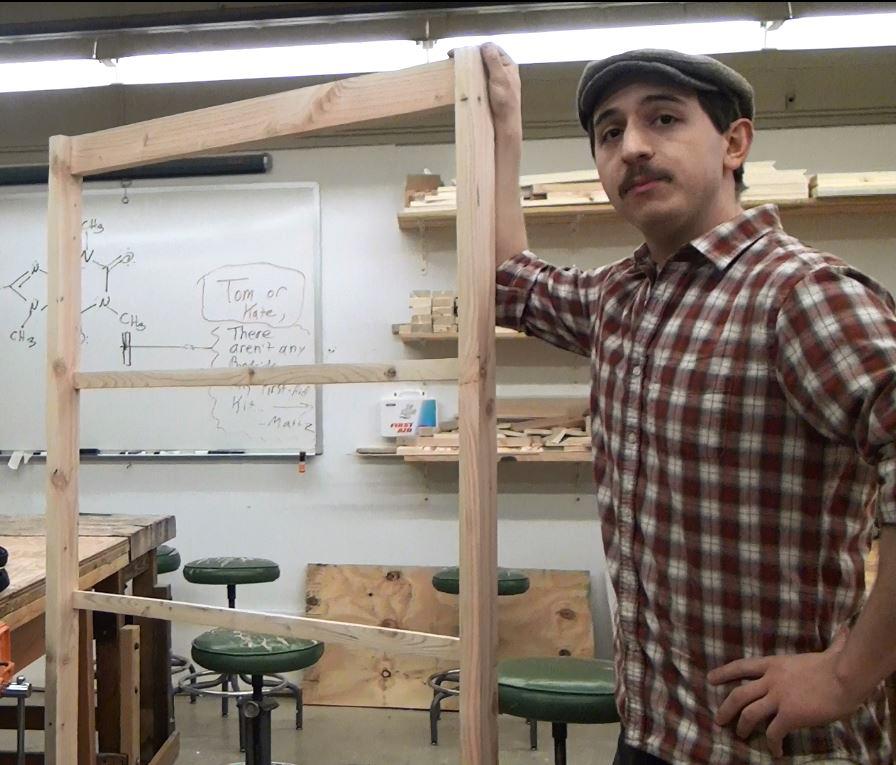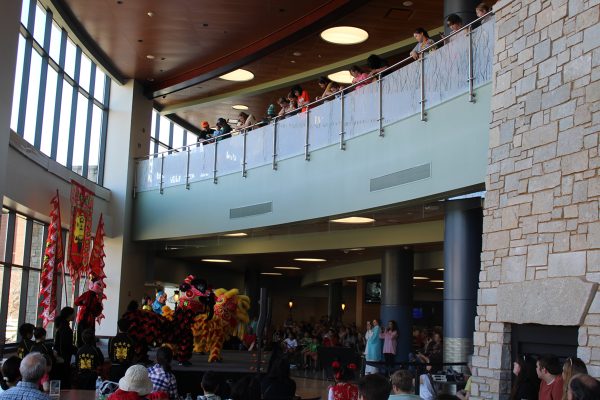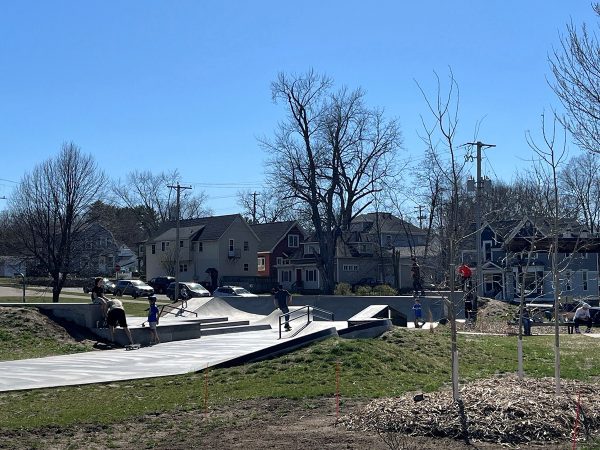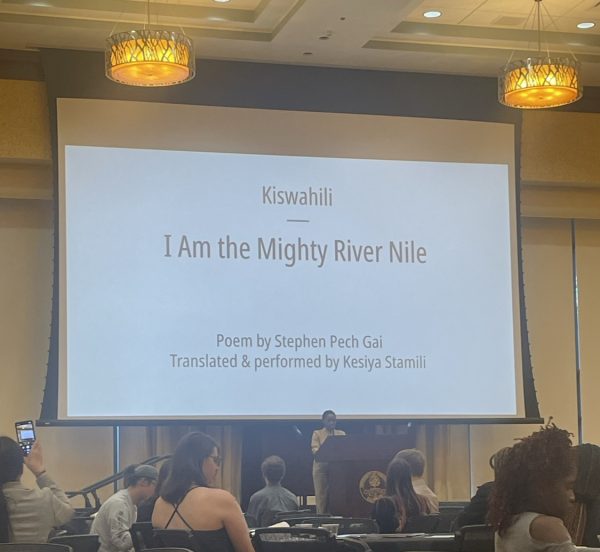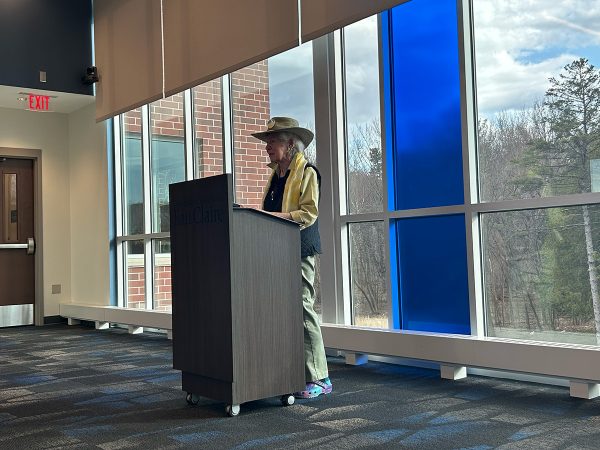Building memories
Student artist creates interactive piece based on childhood experience
Photo by Danielle Pahl
WOOD WORKING: Dusting Schipper standing with work-in-progress, a wood installment that challenges the viewer to write about a tree from their past. © 2014 Danielle Pahl
April 2, 2014
Dustin Schipper, a senior fine arts sculpture major, has a theory that everyone, at some point in his or her lives, has made a connection to a specific tree. For Schipper, growing up with more than 50 on his family’s property made trees a part of his childhood.
“Back in my youth, I was a big avid tree climber, and I have maybe 50, 60 trees on my parents’ property,” Schipper said. “Trees have always been this really integral thing. It just really left a strong imprint on my life.”
That inspiration, and his interest in systems and interconnectivity led to his current work of art that seeks to entice the viewer to reflect on memories.
“It’s a piece about meditating on a tree that was important to the viewer at some point in their life,” Schipper said. “Maybe from their childhood or their old house and they just have strong memories associated with that location and that one living organism.”

Schipper’s piece will feature a desk and chair enclosed by three walls to give the viewer a private experience. On the desk will be two boxes and written instructions that prompts the viewer to write about a tree from their past. The viewer will submit their response in the dispensary box. In the other, will be a seed for the viewer to keep.
“In the other box, the directions will tell you to take a seed pod when you leave,” Schipper said. “The types of tree seeds are going to be the type used in the production of this piece. In that way giving the piece a sense of sustainability, along with the potential to create more memories for people.”
Schipper said many of his stylistic choices reflect his personal preferences, such as lining the walls with a Japanese paper called Shoji. The structure will be also surrounded by dirt.
“A lot of the choices I have made here based around the sensation I want the viewer to have while inside of the piece,” Schipper said. “There are a lot of aromatic choices I have made, such as pine; the old wood is definitely going to have a strong scent of aging and must. It will be the scent of nature and the softened footprint on the gallery floor.”
Schipper said this is the second largest piece he has ever done. He said he believes the project, which is for his senior show case, will require about 10 hours of work each week to meet his installation deadline at the beginning of May. He also said his piece will cost an estimated $400 out-of-pocket to finish.
“The reason I built this space instead of a two-dimensional representational space is because I want the viewer to have their own experience,” Schipper said. “I don’t want to try to project my own experiences onto the viewer. I just want someone to find their own experiences and their own memories and the space seemed like the most appropriate way to do that.”

